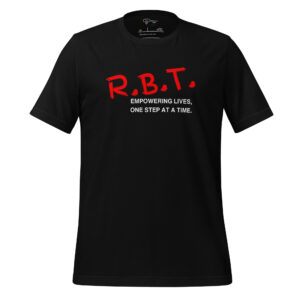Discontinuous Measurement
Table of Contents
Welcome back to our RBT Competency Assessment blog post series; today, we are covering discontinuous measurement.! In this series, we’re diving into each task on the RBT Competency Assessment to help new Behavior Technicians (BTs) prepare for their initial competency assessments and provide a valuable refresher for Registered Behavior Technicians (RBTs) renewing their certification.
In the field of Applied Behavior Analysis (ABA), accurate data collection is crucial for developing effective intervention and treatment plans. While continuous measurement provides a detailed account of every instance of a behavior, there are situations where it is not practical or necessary. This is where discontinuous measurement comes into play. Discontinuous measurement involves sampling behaviors at specific intervals, providing a useful alternative when continuous observation is not feasible.
Discontinuous measurement is particularly important because it allows behavior analysts to collect meaningful data without the need for constant observation. By strategically sampling behavior, analysts can still identify patterns, assess intervention effectiveness, and make informed decisions to improve treatment outcomes. In this blog post, we will explore what discontinuous measurement is, why it is used in ABA, and the different types of discontinuous measurement, including partial interval recording, whole interval recording, and momentary time sampling.
By understanding and mastering discontinuous measurement, Registered Behavior Technicians (RBTs) can enhance their ability to monitor and analyze behavior, ensuring that clients receive the most effective and personalized care. Let’s begin by defining discontinuous measurement and discussing its role in ABA.
What is Discontinuous Measurement?
Discontinuous measurement is a method used in Applied Behavior Analysis (ABA) that involves recording whether or not a behavior occurs during specific intervals of time, rather than continuously tracking every instance of the behavior. This approach allows for efficient data collection when continuous measurement is impractical or unnecessary. By sampling behavior at predetermined moments, behavior analysts can still gather meaningful data to analyze behavior patterns and intervention effectiveness.
In ABA, discontinuous measurement is particularly useful in settings where it is challenging to observe a client continuously. For example, in busy classrooms or during group activities, it might not be feasible for a Registered Behavior Technician (RBT) to track every instance of a behavior. Discontinuous measurement provides a solution by allowing RBTs to focus on specific intervals, making it possible to monitor multiple clients or behaviors simultaneously without sacrificing data accuracy.

Why is Discontinuous Measurement Important?
Discontinuous measurement is important for several reasons:
Efficiency: Discontinuous measurement allows RBTs to collect data without the need for constant observation. This efficiency is crucial in environments where continuous monitoring is not feasible, such as busy classrooms or during activities involving multiple clients.
Practicality: In many real-world settings, it is not always possible to observe a behavior continuously. Discontinuous measurement provides a practical alternative, enabling RBTs to gather data in a structured and manageable way. This method ensures that data collection is feasible even with limited resources.
Focus on Specific Intervals: By focusing on specific intervals, discontinuous measurement can help RBTs and behavior analysts identify patterns and trends in behavior. This targeted approach allows for a more strategic analysis of when and how often a behavior occurs, which can be critical for developing effective interventions.
Complementary to Continuous Measurement: While continuous measurement offers detailed data on every instance of a behavior, discontinuous measurement provides an overview that can be equally valuable. Using both methods in conjunction can give a comprehensive picture of a client’s behavior, aiding in the creation of more effective and personalized intervention plans.
Flexibility: Discontinuous measurement techniques can be adapted to various settings and client needs. Whether in a classroom, therapy session, or home environment, these methods can be tailored to fit the specific context and objectives of the intervention.
By incorporating discontinuous measurement into their practice, RBTs can enhance their ability to monitor and analyze behaviors effectively, even in challenging or resource-limited situations. This approach ensures that clients receive the most appropriate and effective care based on accurate and practical data collection methods.
Types of Discontinuous Measurement
In Applied Behavior Analysis (ABA), there are three primary types of discontinuous measurement: partial interval recording, whole interval recording, and momentary time sampling. Each method has its unique application and provides different insights into behavior patterns. Let’s explore each type and provide real-world examples of when an RBT might use them.
Partial Interval Recording
Definition and Explanation:
Partial interval recording involves observing whether a behavior occurs at any time during a specific interval. If the behavior occurs at least once during the interval, it is recorded as having occurred for that interval. This method is useful for behaviors that do not have a clear beginning and end or occur with high frequency.
Example in ABA:
An RBT is working with a student who frequently talks out of turn during class. Using partial interval recording, the RBT sets a timer for 5-minute intervals. If the student talks out of turn at any point during the 5 minutes, the RBT records the behavior as occurring for that interval. This method helps the RBT identify periods when the behavior is most frequent without needing to count each instance.
Whole Interval Recording
Definition and Explanation:
Whole interval recording involves observing whether a behavior occurs throughout the entire duration of an interval. If the behavior is present for the entire interval, it is recorded as having occurred. This method is useful for behaviors that need to be sustained over a period, such as engagement in a task.
Example in ABA:
An RBT is monitoring a client’s on-task behavior during a homework session. Using whole interval recording, the RBT sets a timer for 10-minute intervals. The RBT records the behavior as occurring only if the client remains on-task for the entire 10 minutes. This method helps the RBT assess the client’s ability to maintain focus and engagement over extended periods.
Momentary Time Sampling
Definition and Explanation: Momentary time sampling involves observing whether a behavior occurs at the exact moment the interval ends. The behavior is recorded as occurring only if it is present at that specific moment. This method is useful for providing a snapshot of behavior at regular intervals and is less time-intensive than other methods.
Real-World Example: An RBT is tracking a student’s engagement during a group activity. Using momentary time sampling, the RBT sets a timer to beep every 15 minutes. At each beep, the RBT looks up and records whether the student is engaged in the activity at that precise moment. This method allows the RBT to collect data without needing to observe the student continuously, making it practical in a busy classroom setting.
By understanding and applying these types of discontinuous measurement, RBTs can effectively monitor and analyze behaviors in various settings. Each method offers unique advantages and can be selected based on the specific behavior and context, ensuring accurate and meaningful data collection.
FAQ on Discontinuous Measurement
- Q: What is an example of non-continuous measurement?
- A: An example of non-continuous measurement is partial interval recording, where the observer notes whether a behavior occurs at any time during a specific interval, rather than continuously tracking each instance of the behavior.
- Q: When might you use a discontinuous measurement procedure?
- A: Discontinuous measurement procedures are used when continuous observation is impractical, such as in busy classrooms or during group activities. They allow for efficient data collection without the need for constant monitoring.
- Q: What is the difference between continuous and discontinuous recording?
- A: Continuous recording tracks every instance of a behavior throughout an observation period, providing detailed data. Discontinuous recording samples behavior at specific intervals, offering a more practical approach in certain settings but potentially missing some instances of behavior.
- Q: What is discontinuous data recording?
- A: Discontinuous data recording involves observing and noting whether a behavior occurs during specific intervals, rather than tracking it continuously. This method includes techniques like partial interval recording, whole interval recording, and momentary time sampling.
Final Thoughts
Discontinuous measurement is a vital tool in the field of Applied Behavior Analysis (ABA), offering a practical and efficient way to collect behavior data when continuous observation is not feasible. By understanding and utilizing methods such as partial interval recording, whole interval recording, and momentary time sampling, Registered Behavior Technicians (RBTs) can accurately monitor and analyze behaviors, ensuring effective and personalized interventions.
Mastering these techniques allows RBTs to contribute significantly to the success of ABA programs, ultimately leading to better outcomes for clients. Remember, the key to effective data collection is choosing the right method for the specific behavior and setting.
Explore More Resources
If you found this guide on discontinuous measurement helpful, be sure to explore more resources on our website. We offer a wealth of information, including detailed articles, study guides, and practical tips to help you succeed as a Registered Behavior Technician (RBT).
Are you preparing for the RBT competency assessment? Check out our comprehensive study materials and mock exams designed to help you ace the test and become a confident, competent RBT.
Don’t forget to visit our ABA Schwag Shop for unique and fun merchandise! Show your pride in the field with our selection of ABA or RBT-themed shirts, mugs, and more.
For more information on becoming a Registered Behavior Technician and for the latest research and resources in Applied Behavior Analysis, visit the Behavior Analyst Certification Board (BACB) website.
Share this blog with your peers and colleagues to spread the knowledge and support the ABA community!



